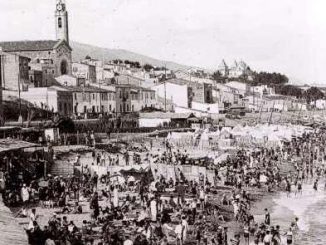
‘Sacar al pájaro’. Stigmatization and public space in Besós, Barcelona – José Mansilla
Excerpt from the presentation made in the framework of the “I Jornades de Marges i Perifèries Urbanes”.












 “Early in the morning I find Taksim square already full of people and fully operational, among the flags of the left-wing extraparlamentary groups, and of associations of the civil society, from feminists to LGBT, from kurdish anarchists to muslim anticapitalists and marxists…” A commentary from our correspondent in Istanbul: [in spanish and italian]
“Early in the morning I find Taksim square already full of people and fully operational, among the flags of the left-wing extraparlamentary groups, and of associations of the civil society, from feminists to LGBT, from kurdish anarchists to muslim anticapitalists and marxists…” A commentary from our correspondent in Istanbul: [in spanish and italian]
[audio: http://periferiesurbanes.org/wp-content/uploads/2013/06/CavBella.mp3|titles=Cav Bella|artists=Grup Yorum]…


 Who is not frightened by the idea of the unstoppable growth of cities in Asia and in the former "third world", or by the perspective (apocalyptical, though critically framed) of moving towards a planet of slums? But in the places closer to this phenomenon - for example in the popular neighborhoods of Mumbai, India - the idea of slum has been criticized since many decades. These urban zones that don't even deserve being called neighborhoods, always presented towards the exterior as marked by lacks (of hygiene, of safety, of integration, of control, even of morality), under a deeper scrutiny reveal histories and dynamics complex and functional, that had been interpreted in various forms according to the different theories. Based in an office in Dharavi-Koliwada (the enormous neighborhood popularized by Slumdog millionaire), the two urban activists Matias ECHANOVE and Rahul SRIVASTAVA (from Urbz collective) show how a series of spontaneous social structures, internal to the so-called slums, cause a constant improvement and development, often obstructed by local authorities or by urban reform plans. In territories as thick and reticular as forests of mangroves, the only valid ways to development are those generated by their very users: homegrown, as the neighborhoods themselves.
Who is not frightened by the idea of the unstoppable growth of cities in Asia and in the former "third world", or by the perspective (apocalyptical, though critically framed) of moving towards a planet of slums? But in the places closer to this phenomenon - for example in the popular neighborhoods of Mumbai, India - the idea of slum has been criticized since many decades. These urban zones that don't even deserve being called neighborhoods, always presented towards the exterior as marked by lacks (of hygiene, of safety, of integration, of control, even of morality), under a deeper scrutiny reveal histories and dynamics complex and functional, that had been interpreted in various forms according to the different theories. Based in an office in Dharavi-Koliwada (the enormous neighborhood popularized by Slumdog millionaire), the two urban activists Matias ECHANOVE and Rahul SRIVASTAVA (from Urbz collective) show how a series of spontaneous social structures, internal to the so-called slums, cause a constant improvement and development, often obstructed by local authorities or by urban reform plans. In territories as thick and reticular as forests of mangroves, the only valid ways to development are those generated by their very users: homegrown, as the neighborhoods themselves. Copyright © 2024 | WordPress Theme by MH Themes